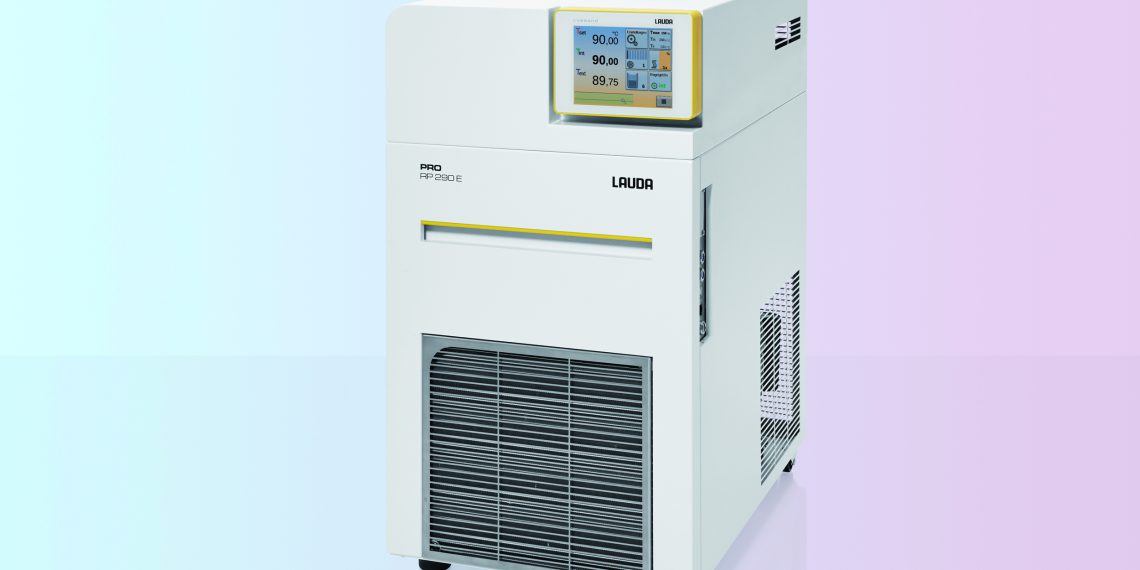The LAUDA PRO has been inspiring users with specific temperature control requirements since 2016. Lauda has now extended its PRO portfolio to include two new low temperature circulation thermostats designed for the specific requirements of test benches, reactors, climatic chambers and distillation plants in the chemical, pharmaceutical, biotech, mineral oil, automotive and electrical engineering industry.
With a temperature range of ‑90 to 200 °C and a cooling capacity of 0.8 kW, the RP 290 E and RP 290 EC low temperature circulation thermostats are ideal as a substitute for dry ice in external low-temperature applications, for monitoring organometallic reactions, for determining pour and cloud points during mineral oil analyses and as a cooling source for Brookfield tests, to name but a few examples. The new RP 250 E and RP 250 EC models offer a cooling capacity of 1.5 kW, almost twice the capacity of the RP 245 (0.8 kW), which was previously the most powerful Lauda PRO low temperature circulation thermostat – with the same space requirements. They are the first choice for static temperature control tasks that require a high cooling capacity and involve extremely rapid temperature changes within a range of ‑50 to 200 °C. Typical application areas include reaction monitoring in the chemical and pharmaceutical industries as well as long-term temperature tests, function and stress tests, climate simulations and battery tests in the electric mobility sector. All new devices have a heating output of 2.5 kW. A minimum filling volume of 2.4 liters and an additional expansion volume of two liters serve as a buffer to counteract thermally induced volume expansion, even on larger consumers. The standard use of natural refrigerants and a powerful, adjustable pressure-suction-pump round off the range of technical equipment together with a hybrid cooling system that cools the air of the refrigerating machine and simultaneously allows water cooling to reduce the dissipation of heat into the environment.
All Lauda PRO devices are fitted with a detachable, intuitively operated control unit: The Base model provides a bright, high-contrast display OLED display with softkeys, while the Command Touch operating unit (all model variants with additional letter ‘C’) offers individual programming, password-protected user management and a USB interface for data exports. The bright 5.7 inch touch screen can even recognize the touch, swipe and zoom gestures of users wearing gloves – a valuable benefit in the laboratory.
Biogas technologies for production of biomethane
The untapped feedstock potential for biomethane production in Spain is very large as the country has a very strong food...
Read more
















